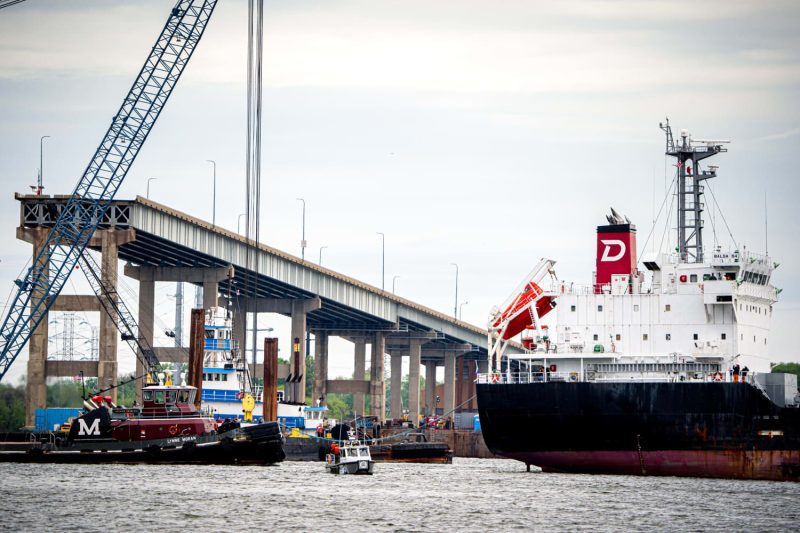In the aftermath of the devastating Key Bridge wreckage in Baltimore, the maritime community now has some encouraging news to share. A newly formed deep-water channel, carved by teams of engineers, divers, and maritime professionals, has allowed the first ship to successfully bypass the wreckage and traverse the city’s waterways once again.
The intense project became a necessity after the unfortunate incident that saw devastating wreckage at the Key Bridge in Baltimore. This calamity not only obstructed the route for ships, but also necessitated larger-scale investigations into maritime safety. However, in the interim, it was crucial to maintain the city’s maritime trade and transport routine, which prompted the creation of the new water passage.
The new deep-water channel is an impressive accomplishment driven by the joint efforts of several teams. The engineers and divers worked tirelessly, developing the blueprints for the new channel, testing the waters for depth, current, and safety, and carefully digging the new passage. It is a testimony to human resilience and dedication, a beacon of hope carved out in the midst of calamity.
The first ship to pass the new channel was a cargo vessel, marking a significant milestone in the recovery efforts. It was observed that the vessel’s journey was smooth, validating the design and construction of the deep-water channel. This passage will now serve as a new route for trade, further invigorating the economic potential of the city.
This emergency channel is more than just a mere diversion; it also enabled the seamless transportation of essential goods and resources into Baltimore. With uncertainty prevailing over when the wreckage at the Key Bridge could be cleared, this new channel proved to be a lifeline for the city’s trade and commerce.
Apart from its immediate benefits, the creation of the deep-water channel shone a spotlight on the potential use of these maritime pathways. The success of this project could prompt the further expansion of water routes around the city and possibly also other regions where maritime trade is critical.
Yet, the deep-water channel is not a permanent solution. It has been designed and created to be a temporary passage until the Key Bridge wreckage is cleared. Thus, while it currently provides an efficient route for ships, efforts are ongoing to clear the bridge wreckage and reinstate the original route.
In a creative blend of resourcefulness, ingenuity and determination, Baltimore’s maritime community has overcome a major setback by carving out this new deep-water channel. While it serves as a temporary solution, its success is a vindication of the capabilities and resilience of the human spirit in dealing with unforeseen challenges. This accomplishment will be documented as one of the ingenious triumphs in the history of maritime operations in Baltimore.




